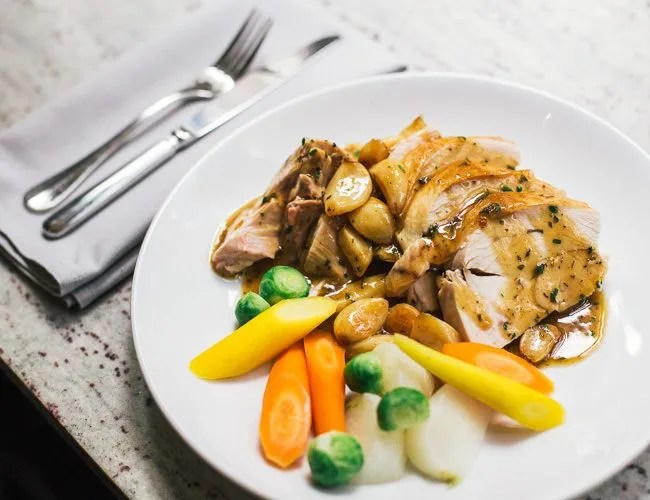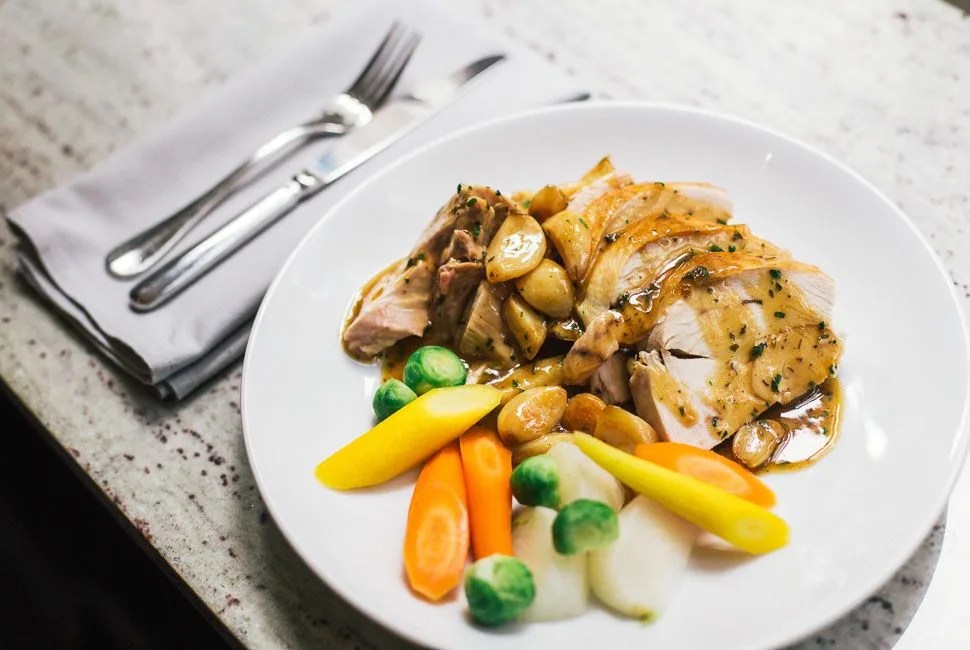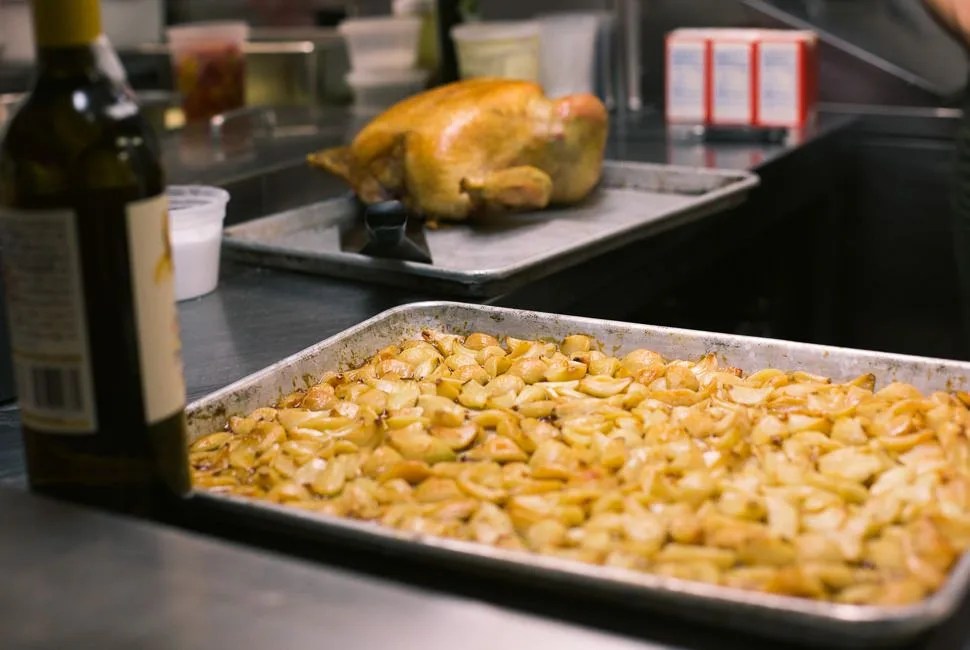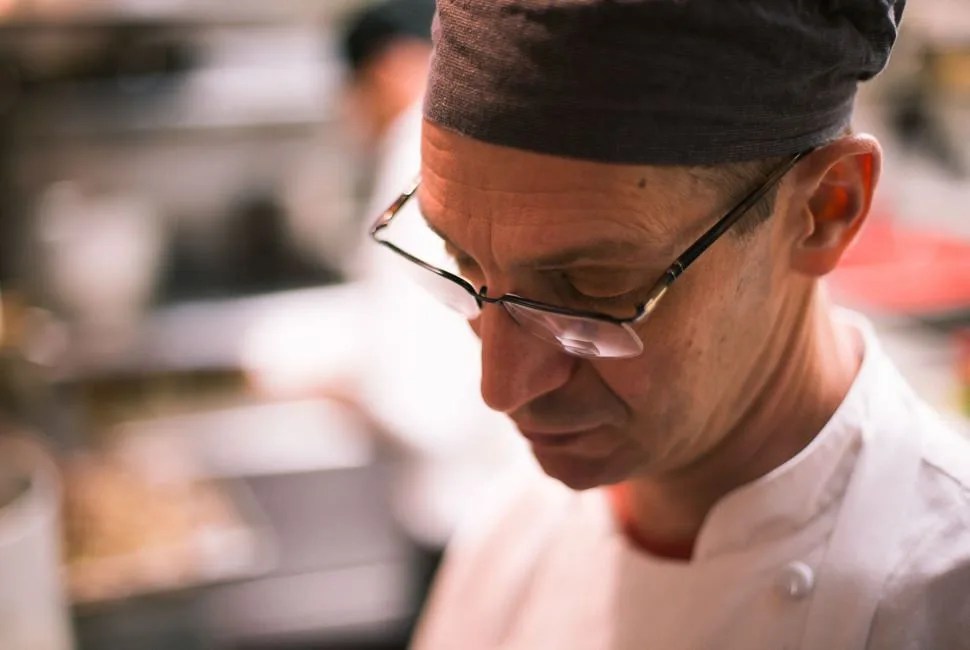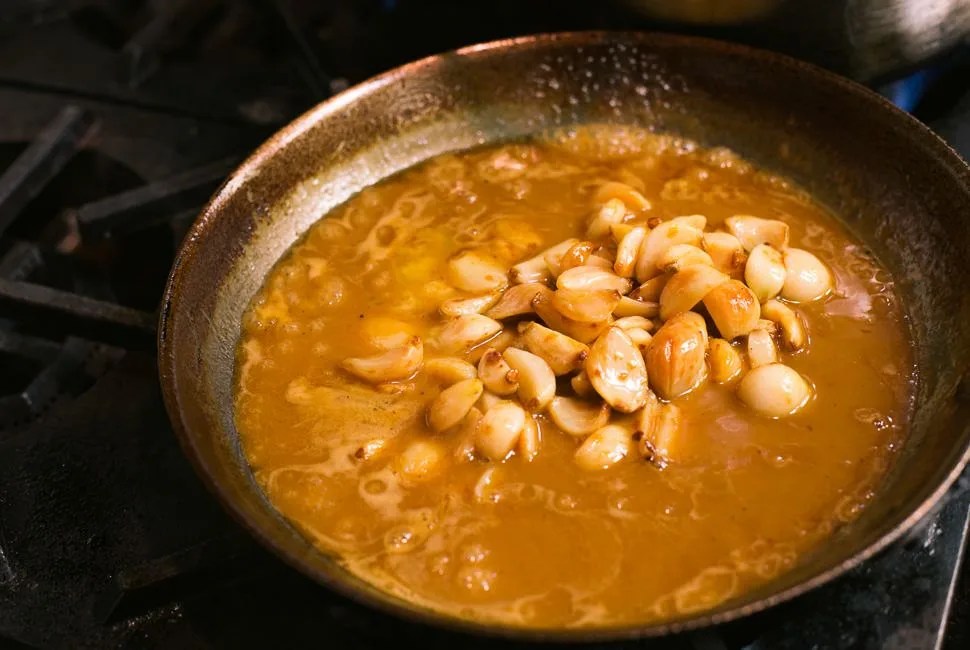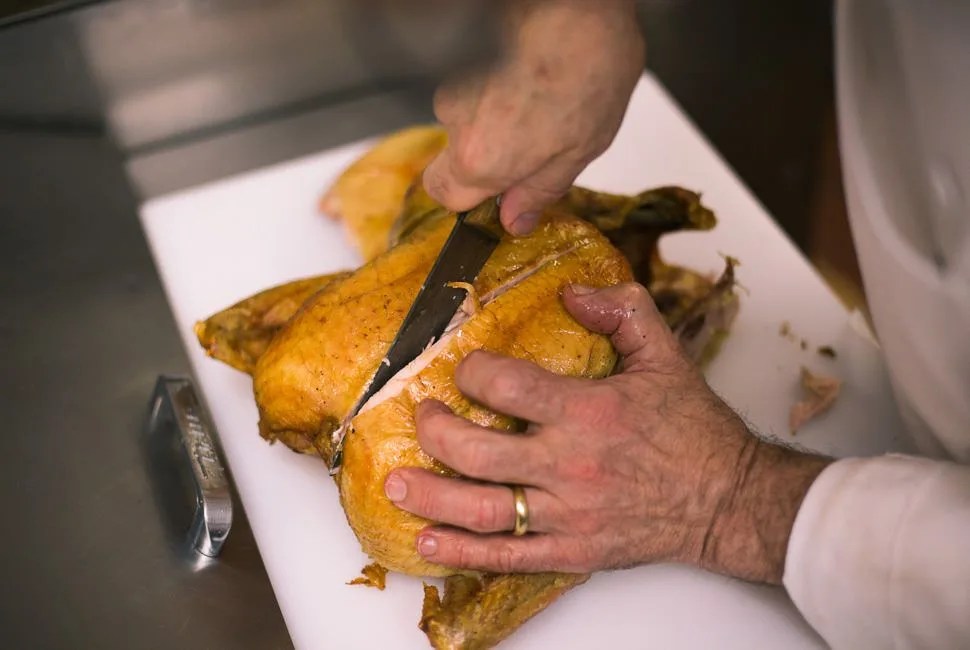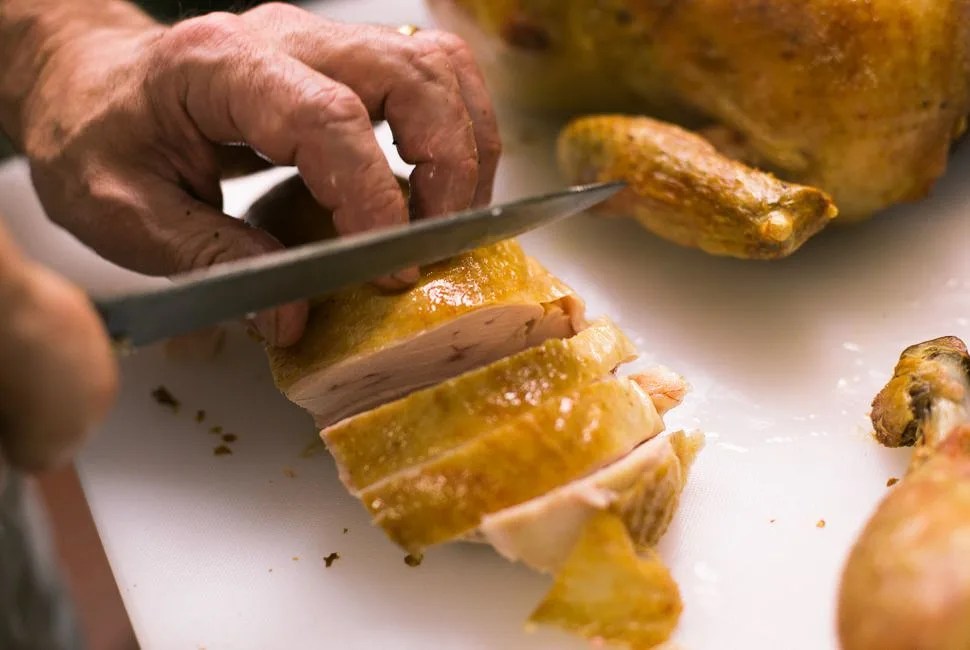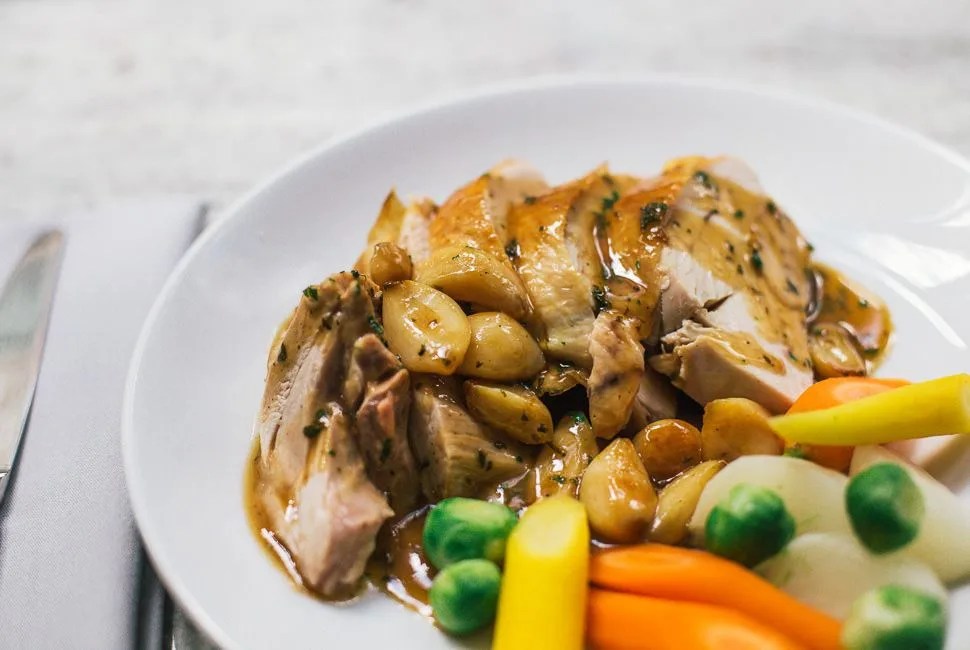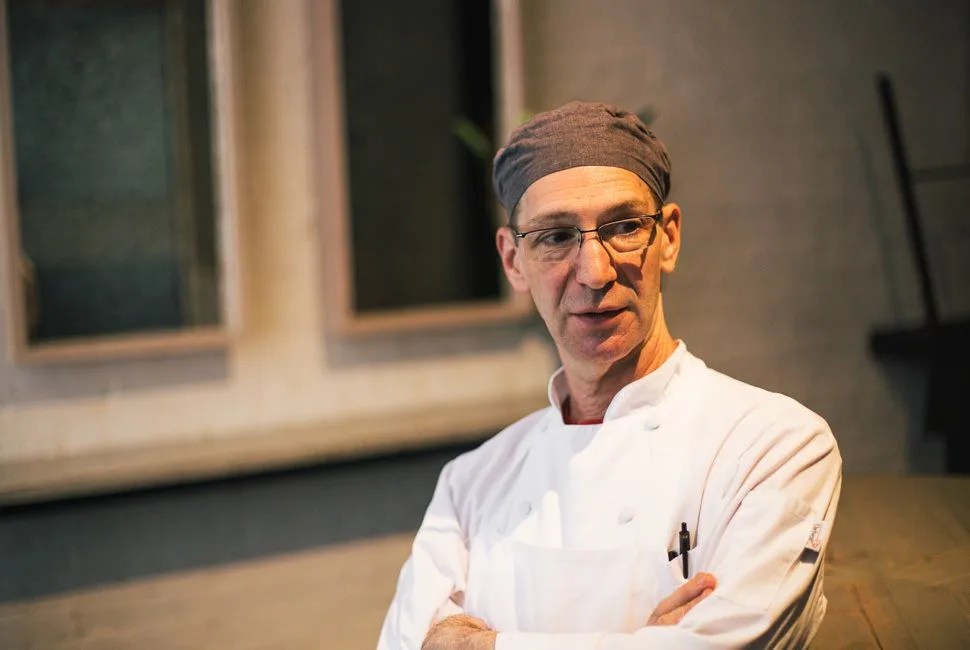8 photos
From The Horn of Plenty to the myriad mouths to feed, Thanksgiving is all about abundance. Your bird should reflect that. Perhaps on the basis of size alone, turkey is the default — but there’s a better way to feed your folks. A more delicious, more moist, more tender way. Its name: the capon.
In the words of George Beuoy, a frugally minded farmer from the early 20th century: “Capon in the olden times was the crowning event in the feast of the ancient kings and queens…. Their rich, wholesome, tender flesh contains the life-giving, brain-forming strength-producing food that is required by the high-strung workingman of modern times, be his work indoors or out.”
Quite the sales pitch. Capon is, in short, an “unsexed” rooster (read: castrated, like some beef cattle), the emasculation of which results in a bird twice as large as normal, and therefore capable of feeding an entire family. The jury’s out on the supposedly extraordinary life-giving, brain-forming, strength-producing qualities of capon. But this much is for sure: it combines all the best qualities of your favorite white meat — the sheer size of turkey, the audibly crispy skin of a perfectly roasted chicken, and the perfect moisture of pork (you know, the other white meat).
Chef David Waltuck, of Chanterelle fame, invited us to watch him prepare capon at élan, his new restaurant in Gramercy, Manhattan. “A lot of people like to fuss over it”, he told us, “but it’s not really necessary.” Waltuck oiled the bird up the way a boxing coach rubs his pupil’s shoulders after a long practice. To prepare the accompanying sauce, he added one…two…three cubes of butter — whisked for a second or two, then smirked knowingly and added two more. His recipe, featured below, is simple but wildly effective, sure to knock turkey right out of the mind of whoever takes a bite. And with minimal preparation, you’ll have plenty to eat and plenty of time to focus on more important things: enjoying the big game, sneaking handfuls of stuffing, and so on.

Carving Up Capon
